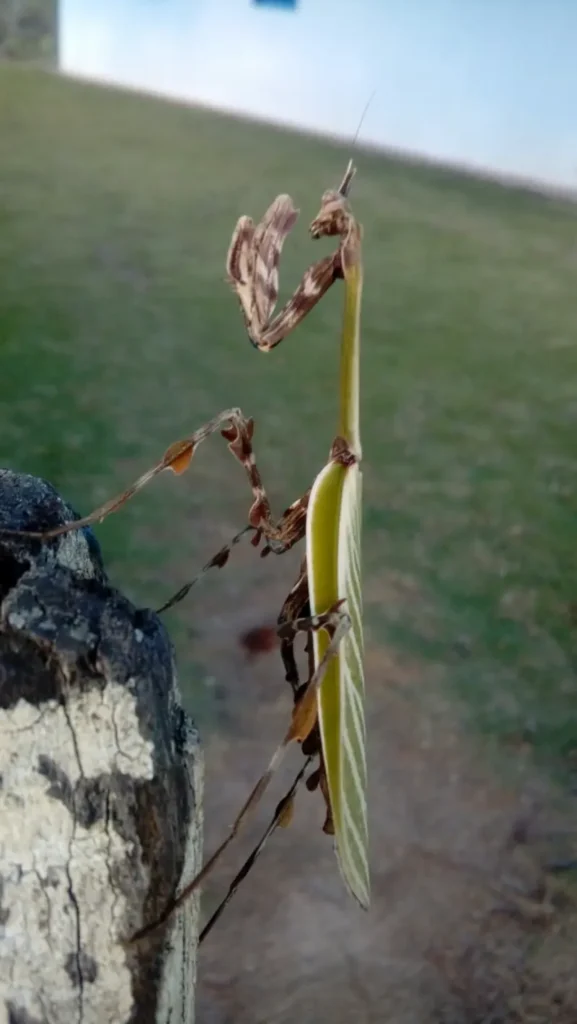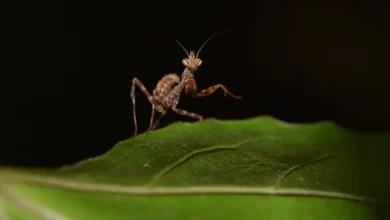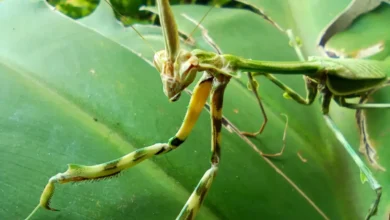For a captive Zoolea peregrina, providing the right diet is crucial for maintaining its health and well-being. As a predatory insect, Zoolea peregrina requires a diet of live prey, and the best food options should mimic what it would naturally consume in the wild. Here’s a guide to the best food for a captive Zoolea peregrina:
Best Food Options for Zoolea peregrina
- Fruit Flies (Drosophila spp.):
- Usage: Ideal for feeding young nymphs (baby mantises) and smaller individuals.
- Description: Fruit flies, particularly flightless varieties like Drosophila melanogaster, are small, easy-to-catch prey that provide a good source of protein and nutrients. They are especially useful for newly hatched nymphs that need small, manageable prey.
- House Flies (Musca domestica):
- Usage: Suitable for subadult and adult Zoolea peregrina.
- Description: House flies are larger than fruit flies and are an excellent choice for adult mantises. Their active flying behavior encourages natural hunting instincts and provides good exercise for the mantis.
- Small Crickets:
- Usage: Suitable for juvenile to adult mantises.
- Description: Crickets are a staple in the diet of many captive mantises. They are readily available, easy to gut-load (feed with nutritious foods before offering to the mantis), and provide a substantial meal. Choose crickets that are appropriately sized—no larger than half the size of the mantis’s body.
- Small Roaches (Blaptica dubia, Nauphoeta cinerea):
- Usage: Suitable for juveniles and adults.
- Description: Roaches like Dubia and Turkestan roaches are nutritious and easy to manage in captivity. They are a great alternative to crickets, offering a protein-rich diet. Their slower movement also makes them easier for the mantis to catch.
- Moths and Small Butterflies:
- Usage: Occasional treat for adults.
- Description: Offering moths or small butterflies can provide dietary variety and stimulate natural hunting behaviors. Ensure that the moths or butterflies are captive-bred and free from pesticides.
- Small Grasshoppers or Locusts:
- Usage: Suitable for adult mantises as an occasional meal.
- Description: Grasshoppers or locusts can be offered occasionally to provide dietary diversity. They are larger prey items, so ensure they are appropriately sized for the mantis.
Feeding Frequency
- Nymphs: Feed daily or every other day. Nymphs have a faster metabolism and require more frequent meals.
- Juveniles: Feed every 1-2 days. As they grow, their feeding frequency can be slightly reduced.
- Adults: Feed every 2-3 days. Adults have a slower metabolism and can go longer between meals.
Feeding Tips

- Variety: Provide a variety of prey items to ensure a balanced diet. Different prey types offer different nutrients, so rotating between flies, crickets, and roaches is beneficial.
- Prey Size: Ensure the prey is appropriately sized—no larger than half the size of the mantis. This reduces the risk of injury or difficulty during feeding.
- Gut-Loading: Gut-load prey with nutritious foods (such as fruits, vegetables, and high-quality insect food) before offering them to your mantis. This ensures the prey is as nutritious as possible.
- Remove Uneaten Prey: Always remove any uneaten prey after a few hours to prevent it from stressing or injuring the mantis, especially during molting.
Hydration
- Misting: Lightly mist the enclosure every couple of days to provide a water source, as mantises often drink from droplets. Avoid over-misting, which can raise humidity too much or cause mold.
- Water Dish: A shallow water dish can be provided, though it’s generally unnecessary if regular misting is done.
For a captive Zoolea peregrina, a diet rich in variety and appropriately sized prey such as fruit flies, house flies, small crickets, and roaches will help ensure its health and vitality. Regular feeding, proper hydration, and a well-maintained environment will contribute to a thriving mantis.

